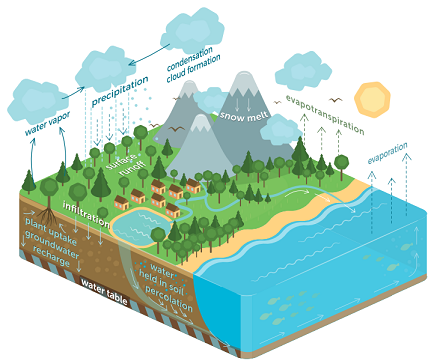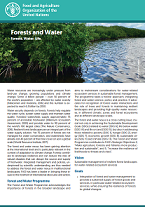The Forest-Water Nexus

Trees and forests play an important role in the water cycle. Forests influence streamflow regulation; reduce soil erosion and sedimentation of waterways; foster groundwater recharge and contribute to atmospheric water recycling, including cloud generation and precipitation through evapotranspiration. Forests also prevent siltation, reduce erosion, and act as natural filters retaining up to 80 percent of sediments. These effects result in high-quality water resources that contribute to food and water security and livelihoods.
Changes in land use - such as deforestation, degradation, reforestation, and afforestation - can influence water services and landscape resilience in the face of water-related natural hazards. Deforestation can lead to increased water yield in the short term but may reduce annual yield in the long term, affecting both nearby and distant water supplies. Deforestation can also increase sediments downstream, resulting in flood risks.
Forest restoration may reduce annual yield in the short term; however, it can improve the supply of hydrological services in the long term, especially in relation to water quality and regulation. Therefore, the impacts of land-use changes on water services can be positive and/or negative, depending on different contexts and decisions, highlighting the need to consider a water-centered approach to forest management.
About us
FAO has been a leader in bringing the forest-water issue to the forefront of international discourse and action, known as the International Forests and Water Agenda. This process involves various stakeholders representing the forest and water sectors, governments, academia, private sector and civil society.
The Forests and Water programme takes a holistic approach, integrating forest-water science, policy and practice. It advocates for the recognition of forest-water interactions and the role trees and forests play in maintaining resilient landscapes and providing high quality water resources, taking into account forest-water interactions for different climatic zones, forest ecosystems and at different landscape scales.
For more information on the Forest and Water Programme, read our flyer.

